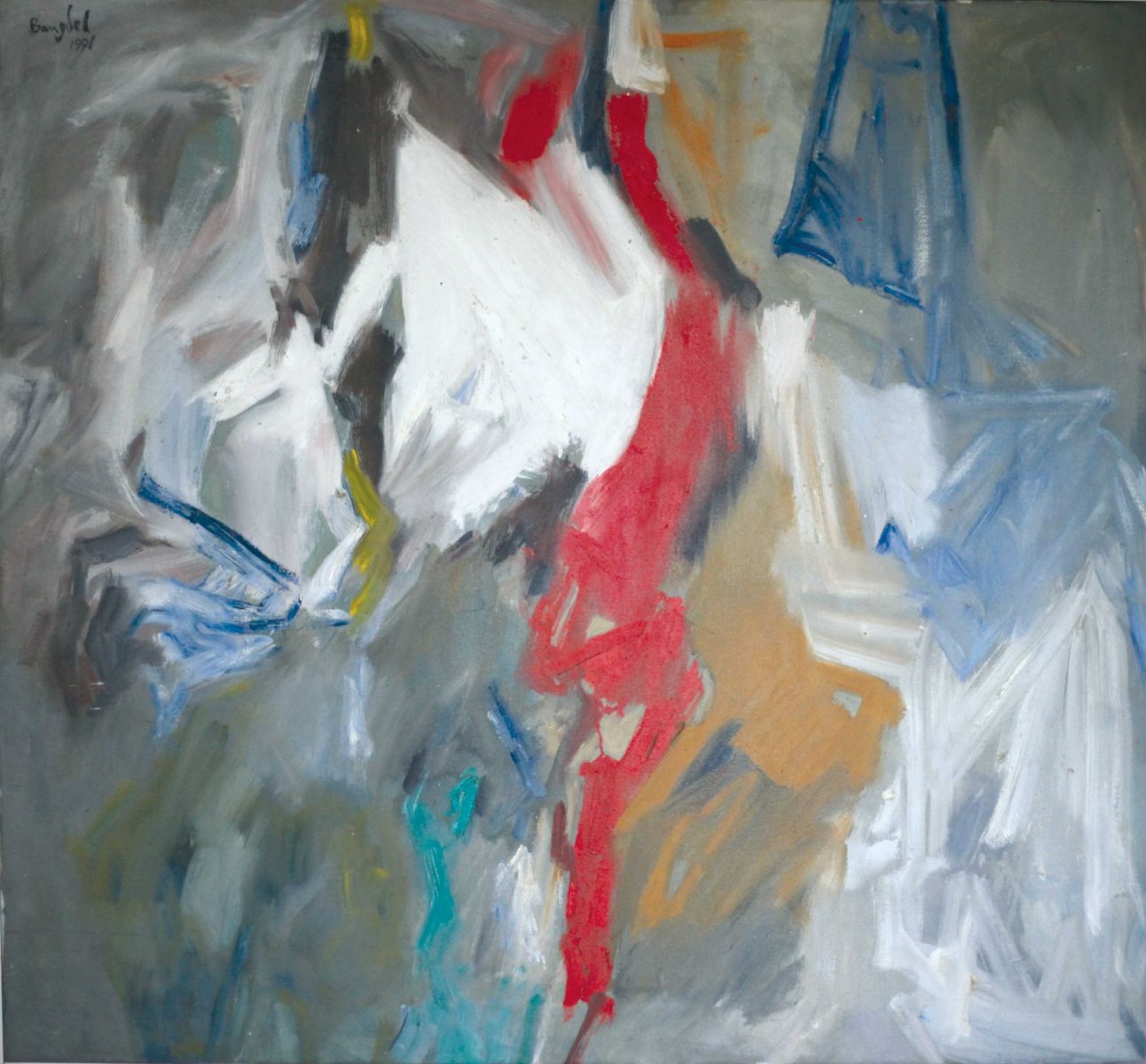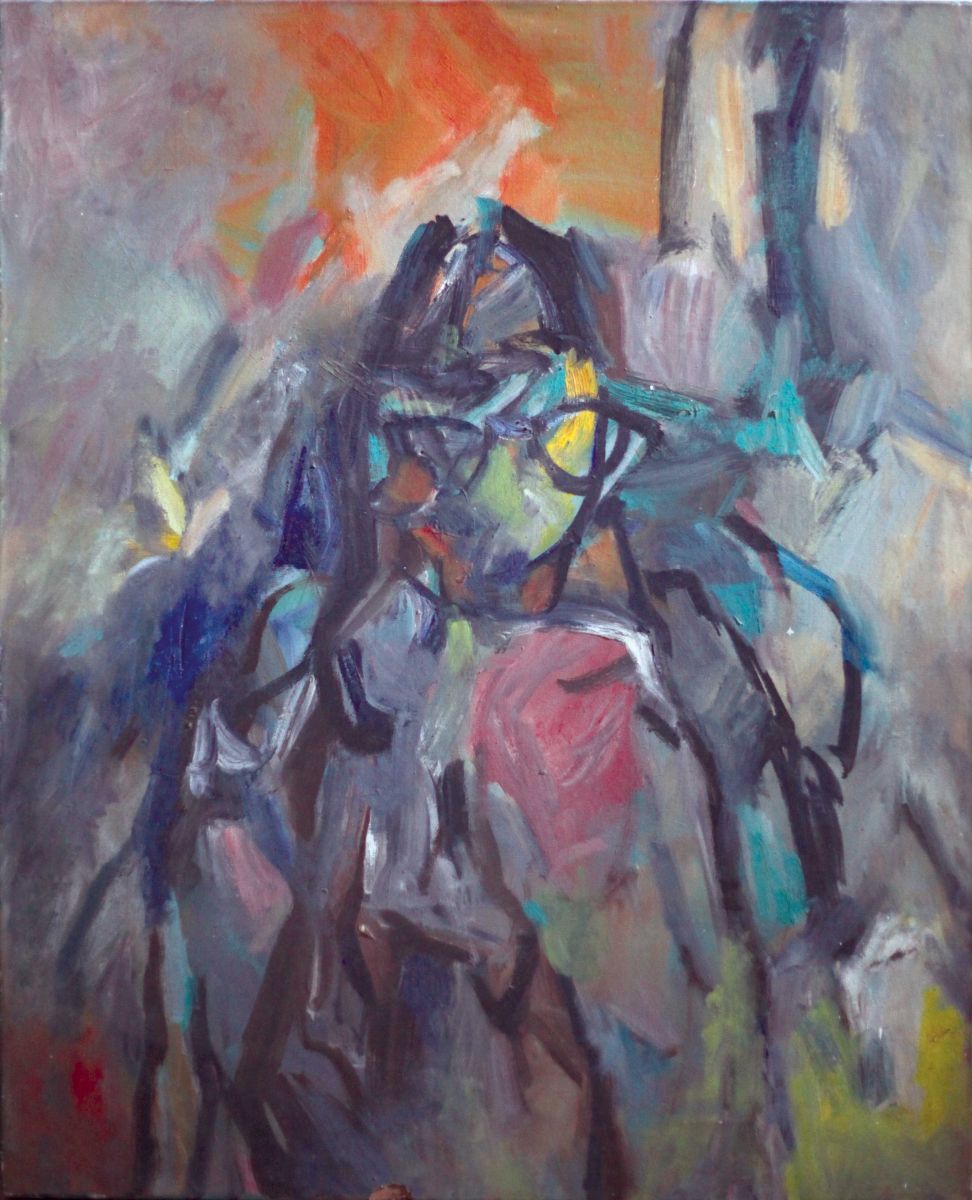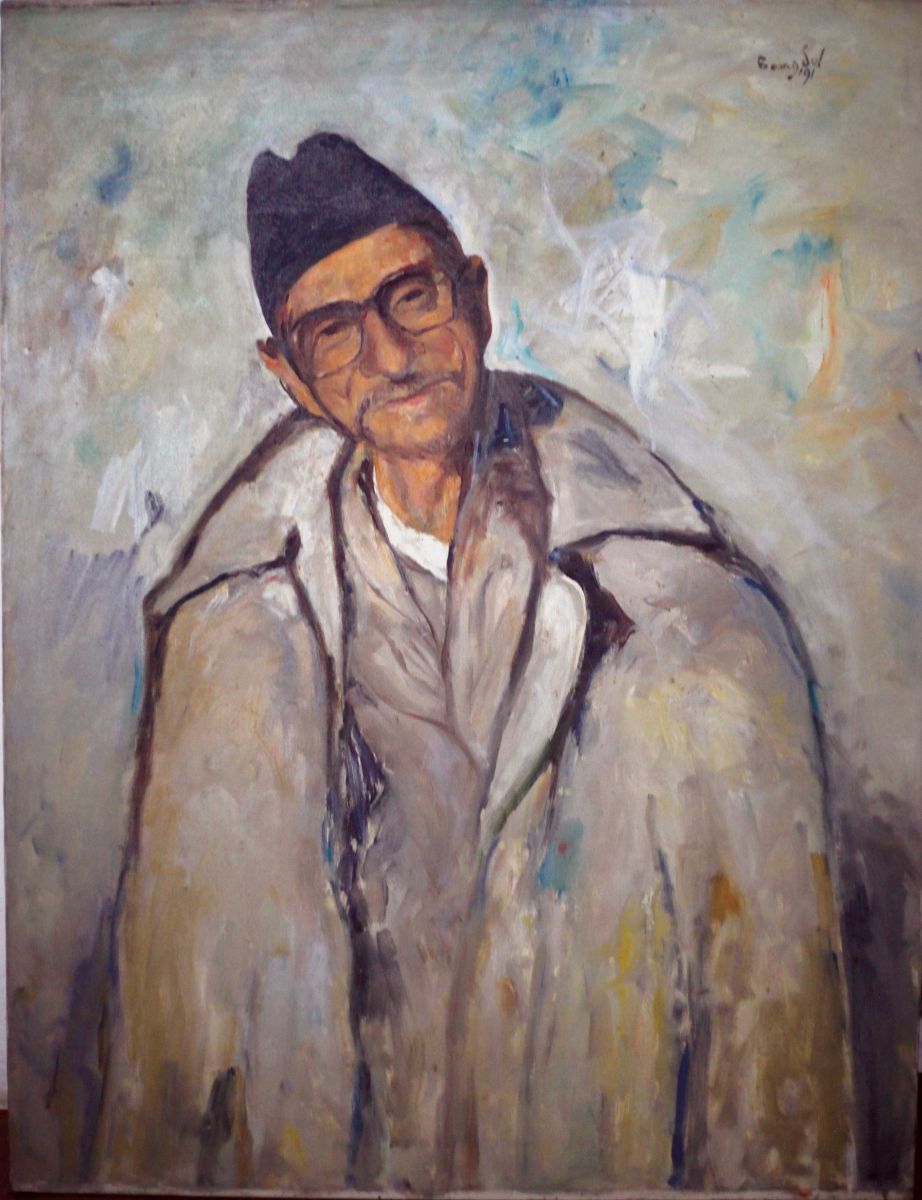
Bangdel’s ‘Struggle for Democracy’ (1991)
Three decades ago, at the time of the 1990 Jana Andolan, Nepal’s ‘People’s Movement’ for Democracy, Lain Singh Bangdel was inspired to produce a series of abstract paintings on the democracy theme. He had just retired from two terms as Chancellor of the Royal Nepal Academy and, as if making up for time lost in the pursuit his official duties, he returned to the painter’s easel with renewed energy. Since 1960 most of his art was abstract expressionism, perhaps best defined as follows:
“What the [abstract expressionist] painter paints is what he perceives in his innermost senses, it is the expression of his being; all that is transitory is for him only a symbolic image: ...what the outside world imprints on him, he expresses from within himself” (by Herwarth Walden, a German abstract expressionist around the time of World War-I).
During Nepal’s Democracy movement of 1990, thousands of people marched in the streets, rallying for political freedom and open elections. Many demonstrators were beaten, some were shot, many were jailed. When Bangdel saw blood being shed for democracy, he was deeply moved. As an artist, he was reminded of revolutionary paintings by the great masters, such as Goya’s depiction of the Spanish.
Revolution in his ‘May 3, 1808’ and Picasso’s 1937 painting of ‘Guernica.’ They stirred Bangdel to express his deep feelings about Nepal’s quest for democracy.
The result was a series of abstract paintings he called ‘Struggle for Democracy’, which crowned his 30 years as an abstract painter. He finished the most well known of the series, a partial abstract, in 1991. In it, the application of colors is broad and free, where the forms and strong tones reinforce the emotional context of the scene. Dramatic conflict is expressed through the direct explosive force of the colors and the people who appear to be in motion. The colors are not heavily textured, yet the violence of the painting is effectively expressed by the artist’s loose brush strokes. Clearly, the brushwork and colors unite to symbolize the dramatic conflict of the painting and his deeply internalized reaction to the movement.

Bangdel’s ‘Freedom’ (1991)
He produced several paintings in this series, the most abstract of which is called ‘Freedom.’ In it, black, red, and grey tones dominate, evoking a constant struggle on the canvas between the forces of color and form. The free, loose strokes reflect Bangdel’s directness and rapid painting. ‘Freedom’ produces power and energy, purely through the act of painting. Natural realism is not his source of inspiration; rather, the intensity of the painting speaks from depth of his intellect and of his emotions.
This style of painting is also seen in other works of that time. For example, compare the direct boldness of ‘Freedom’ with the dramatic abstract of his friend,

Nepal’s first democratically elected Prime Minister in ‘Portrait of Lokanayaka B.P. Koirala’ (loka-nayaka: ‘peoples-leader’). B.P. Koirala (1914-82), had been elected prime minister in 1959, but was deposed and imprisoned the following year by King Mahendra, largely out of a distrust of party politics. Koirala was undoubtedly an inspiration for Bangdel, who knew him well.
1919 is Lain Singh Bangdel’s centennial year (1919-2002). Bangdel was Nepal’s preeminent artist of the last half of the 20th century, a period known as ‘The Bangdel Era’ of modern art in Nepal. This essay incorporates some of the description of Bangdel’s art by his daughter Dina Bangdel (1963-17), and will be incorporated into a forthcoming book describing Lain Bangdel’s artistic legacy, and an extensive gallery of his paintings. The author can be contacted at don.editor@gmail.com.

Compare the boldly abstract ‘Portrait of Lokanayaka B.P. Koirala’, with Bangdel’s poignantly realistic ‘Portrait of B.P. Koirala,’ both painted in 1991.









